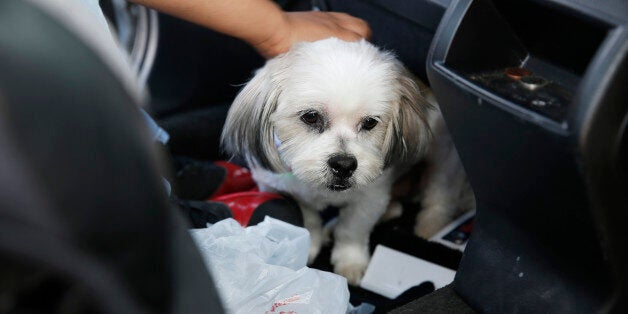

Compulsory microchipping comes into force this week requiring all dogs to be microchipped and the details of the keeper be registered and kept up to date on an approved database.
Government, rescue charities and other organisations say it will greatly speed up the reuniting of stray and missing pets with their owners because animals will be traced that much quicker.
Database companies operate a 24 hour service 365 days of the year. As soon as they receive a call to notify them of a missing or stolen pet, the pet's record will be flagged with a notice to that effect. If your animal is picked up by the dog warden or local authority they are authorised to scan for the chip number and check the databases for a match using a special access PIN. This should always be done in order to try and trace lost or stolen pets.
While this legislation is certainly welcome, it is only a job half done, because microchip scanning is not compulsory. High profile cases of animals being stolen or lost and then sold on to unwitting new owners have revealed problems that can occur if an animal is not scanned for a microchip. Vets, rescues and local authorities are not required by law to scan a new pet. It was only last year that the government gave a mandate to the Highways Agency to scan all domestic animals found dead on major roads, but there are no plans to even make that a legal requirement.
The other important matter to bear in mind is that the microchip is not legally recognised as proof of ownership in itself. It may form part of that proof alongside registration documents, a purchase receipt, rehoming contract or vet bills so it is important to keep any of these records together and in a safe place.
While there is no doubt microchipping should assist with the traceability of pets, there are other pieces of legislation already in existence such as the little known but long standing law for compulsory wearing of a collar and ID tag. The Control of Dogs Order 1992 states any dog in a public place must wear a collar and ID tag that clearly displays the name and address of the owner. In reality it is rarely enforced, but remains another useful way of helping dogs be reunited with their owners, particularly if a phone number is added.
Collar and tag is one of the easiest and quickest ways of reuniting a dog with its owner. The high profile case of French Bulldog Teddy just this year ended in tragedy last week when his body was pulled from the Thames. Posting on the Facebook community page set up to find the missing dog, owner Jade Husted said she was contacted by a man who had found her number on the dog's collar. The body was later scanned to confirm identification. A devastated owner now mourning her loss was at least able to know what had happened to her dog.
This is where the problem lies with this latest piece of legislation. If the last law about collar and tag is little known and rarely enforced, will it be the same for microchipping? And if the scanning of the microchip is not going to be part of this new legislation, will all this effort be in vain if you're in the unfortunate circumstance of losing your pet.
We predict further campaigning by organisations such as Vets Get Scanning will continue as these loopholes are exposed the next time a high profile dog theft or dog loss illustrates these missing pieces of the jigsaw puzzle.
In the meantime, we think dog owners need to be aware of the issues around missing and stolen dogs. You will find several information sheets on our website ranging from how to protect your dog from theft and what to do if your dog goes missing, to a full Q&A on the compulsory microchipping laws.
If you've done all you can to prevent the situation occurring in the first place and know how to react quickly in the unfortunate event of your dog going missing, then you've given you and your beloved pooch the best possible chance of staying together.
Image copyright the National Animal Welfare Trust